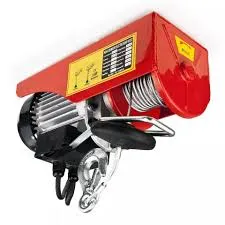


Understanding Fall Arresters A Key Component in Workplace Safety
In various industries, especially those involving construction, maintenance, and high-altitude tasks, the risk of falls is a significant concern. To mitigate this risk, safety equipment such as fall arresters are crucial. A fall arrester is designed to protect workers by arresting falls when they occur, thereby preventing serious injuries or fatalities.
What is a Fall Arrester?
A fall arrester is a piece of equipment used in personal fall protection systems. It is primarily linked to a harness worn by the worker and is designed to stop a free fall within a minimal distance. These devices are engineered to activate quickly and effectively, providing immediate braking in the event of a fall. This technology is essential for jobs involving high elevations, where slips or missteps can easily result in life-threatening situations.
Types of Fall Arresters
There are several types of fall arrest systems, each suitable for different situations. The most common types include
1. Self-Retracting Lifelines (SRLs) These devices automatically extend and retract as the worker moves, keeping the line taut and ready for quick deployment. In the event of a fall, the SRL locks instantly, providing an effective means of fall arrest.
2. Fall Arrest Blocks These are similar to SRLs but often have a larger capacity and can be used in more diverse applications. They are typically used in construction environments where workers might be at risk of falling from heights.

3. Shock Absorbers Often attached to lanyards, shock absorbers reduce the impact force on the body during a fall, making them a crucial component in many fall arrest systems.
4. Anchor Points These are secure attachment points used to connect the fall arrest system. Properly installed and tested anchor points are essential for the effectiveness of the fall protection system.
Importance of Fall Arresters in the Workplace
The implementation of fall arresters not only protects workers but also affects overall workplace safety culture. By prioritizing fall protection, employers demonstrate a commitment to employee safety, which can enhance morale and productivity. Furthermore, investing in fall protection systems is often mandated by safety regulations and can help companies avoid significant liabilities resulting from workplace accidents.
Training and Compliance
Proper use of fall arresters requires comprehensive training. Workers need to understand how to correctly wear harnesses, connect to anchor points, and inspect their equipment regularly. Ensuring that all personnel are trained in fall protection systems is vital for maintaining safety and compliance with Occupational Safety and Health Administration (OSHA) standards.
Conclusion
In conclusion, fall arresters are essential tools for ensuring safety in high-risk work environments. By preventing falls and minimizing injury risks, these devices play a critical role in protecting workers and promoting a culture of safety. Companies must prioritize proper equipment, training, and compliance to safeguard their workforce against the dangers posed by falls. By doing so, they not only meet regulatory requirements but also foster a safer, more productive working environment. Investing in fall arrest systems is not just a compliance issue; it is a fundamental component of responsible and effective business operations.



